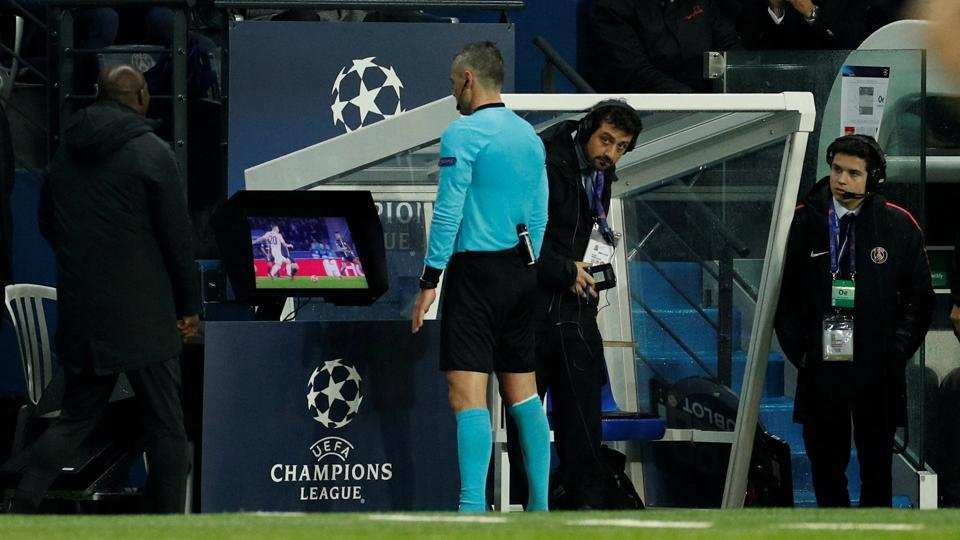March 8 – Faced with a barrage of adverse reaction to highly controversial video assistant referee decisions that proved pivotal in this week’s Champions League last-16 ties, UEFA have been quick to provide a detailed explanation of why the various calls were made – along with images to support their case.
Having been accused of being behind the times, UEFA fast-tracked VAR into the knockout stages of the Champions League, only for the system to cause huge confusion when it was applied in two of the four games staged this week.
Manchester United’s victory over Paris St Germain and Porto’s elimination of Roma both prompted widespread consternation among staff and fans of the defeated sides who claimed they had been unjustly knocked by a system that was supposed to eliminate officiating mistakes.
After initially awarding a corner when Diogo Dalot’s shot struck Presnel Kimpembe’s arm in the PSG-MU game, referee Damir Skomina went to VAR and, after several minutes of deliberation, gave an injury-time United penalty that broke PSG hearts.
PSG’s infuriated players and staff pointed out that the shot was clearly soaring over the bar and Neymar described the call as a “disgrace”.
But, said UEFA, after viewing replays, the referee awarded the spot-kick against Kimpembe because “his arm was not close to his body” when Diogo Dalot’s shot struck it.
“Given that the referee did not recognise the incident clearly during live play [referred to as serious missed incident in the VAR protocol] an on-field review was conducted.”
“The defender’s arm was not close to the body, which made the defender’s body bigger thus resulting in the ball being stopped from travelling in the direction of the goal. The referee, therefore, awarded a penalty kick.”
There was also fierce controversy in Roma’s extra time exit at the hands of Porto that saw the Portuguese side awarded a penalty in the dying minutes after Alessandro Florenzi was adjudged to have pulled back Fernando. Roma officials were furious that the same consistency was not later applied for a foul on Patrik Schick.
“The VAR, after checking the offside line – which confirmed the attacker to be onside – asked the referee if he had seen the holding offence committed by the AS Roma defender,” UEFA explained. “The referee confirmed he was unaware of any holding during live play and he asked for the images to be prepared to allow him to conduct an on-field review (serious missed incident). The review convinced the referee that a penalty kick should be awarded for a holding offence.”
As to why the subsequent foul on Schick went unpunished, UEFA stated: “The referee was close to the action and had himself seen the potential incident in live play and judged that there was no foul.”
“The referee nevertheless decided to delay the restart of play, to give more time to the VAR to review the different camera angles available. A VAR check was conducted, and the various images were studied carefully by the VAR, who did not find any clear evidence.”
Contact the writer of this story at moc.l1732507505labto1732507505ofdlr1732507505owedi1732507505sni@w1732507505ahsra1732507505w.wer1732507505dna1732507505

